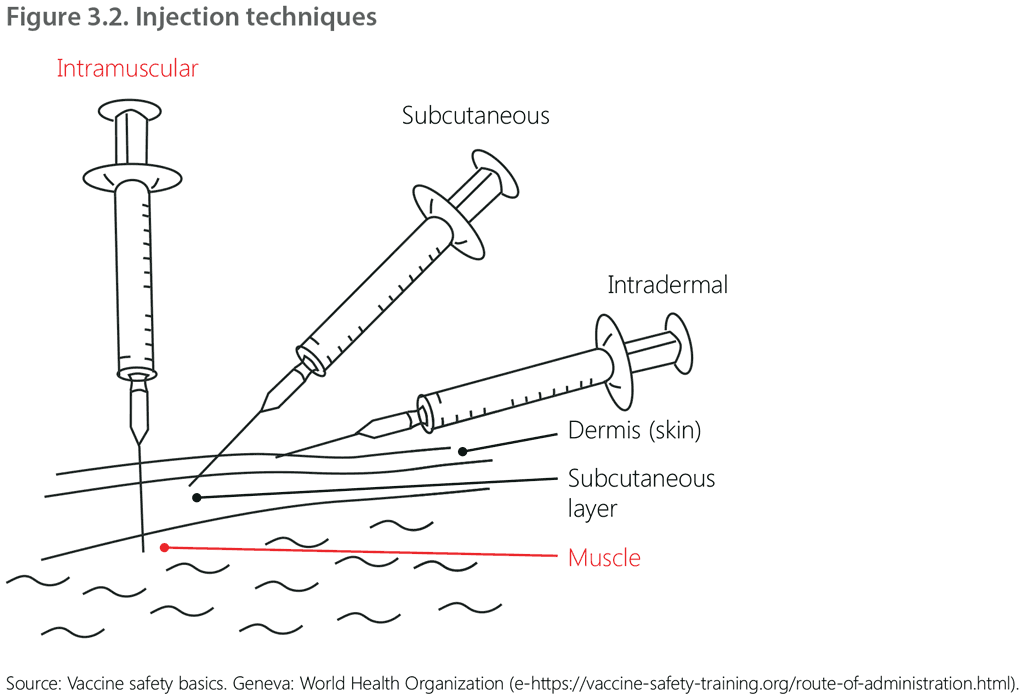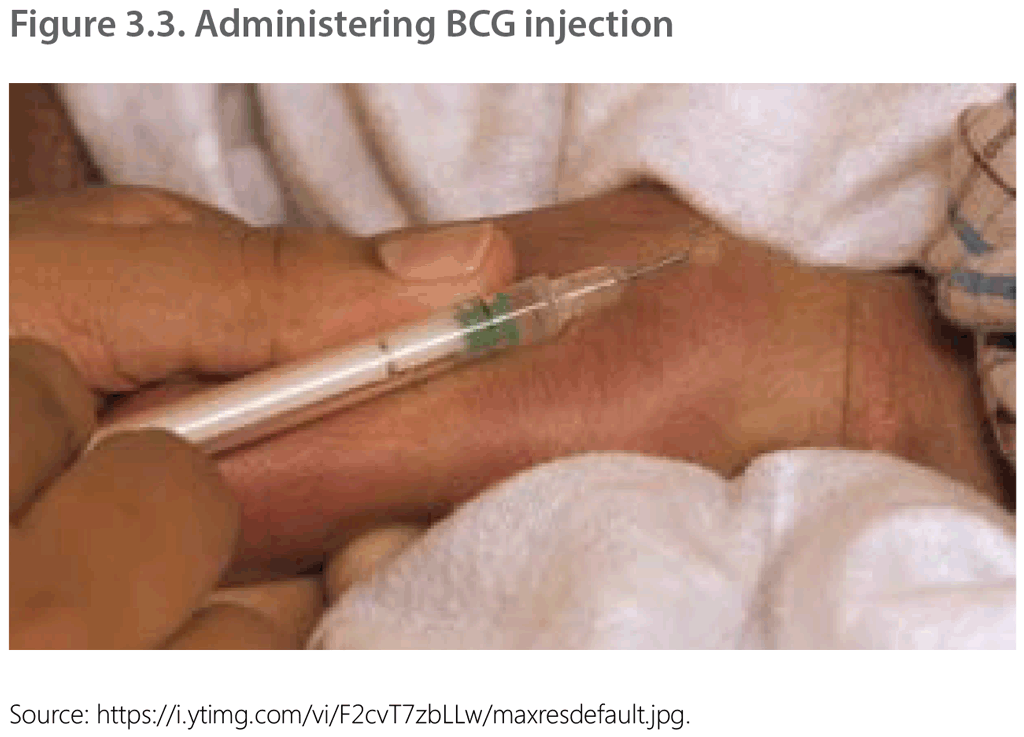Перекрёстные ссылки книги для 3.2.1.2. Administering BCG
Training of health care providers to administer BCG vaccination is important to ensure the correct technique is used. The standard dose of BCG vaccine is an intradermal injection of 0.05 mL of the reconstituted vaccine for infants aged under 1 year, and 0.1 mL for infants aged over 1 year. BCG vaccine can safely be given together with other routine childhood vaccines, including the hepatitis B birth dose. Although efforts should be made to use all doses in BCG multidose vials, children should be vaccinated even if this means part of the vial is wasted. Appropriate infection control techniques should be in place for multidose vials.

Intradermal injection administers the vaccine in the topmost layer of the skin (Figures 3.2 and 3.3). BCG is the only vaccine with this route of administration. It has been reported to be the most difficult vaccine to administer due to the small size of newborn arms and the technical nature of intradermal injection.

To administer the BCG vaccine:
- a short narrow needle (15 mm, 26 gauge) is used;
- the needle should be introduced just under the skin over the left deltoid area;
- the syringe should be held at a 5- to 15-degree angle from the site;
- the needle should be placed almost flat against the patient’s skin, bevel side up;
- the needle should be partially inserted into the skin until the entire bevel is covered by skin;
- when injecting the solution, there should be some resistance and a small weal or bleb should appear, indicating the fluid is in the dermis.
 Обратная связь
Обратная связь